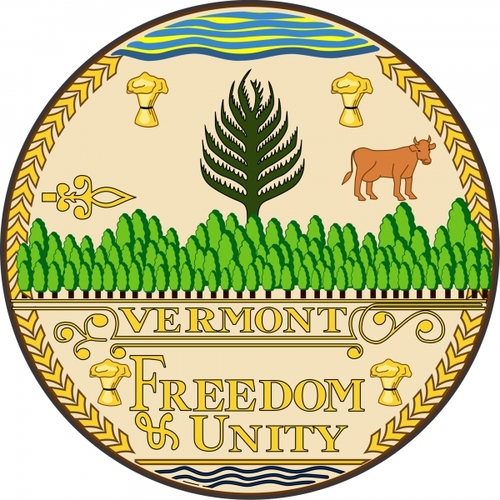TOWNSHEND — Vermont's state seal is the only one in the country that recognizes dairy. Plows appear on 13 and sheaves of wheat on nine, but Vermont stands alone in its recognition of the dairy industry.
But what is happening in our dairy sector today is well-documented: the declining consumption of fluid milk, the dependence on export markets for better pricing, the westward movement of production, the consolidation of and increase in size of farms, the decline in the number of milk-product buyers and sellers, and the inability of the farmer-owned cooperatives to capture higher raw-product pricing for their owner/members as was envisioned when the farmer cooperative movement was established and encouraged in the early 1900s.
And also having a financial impact is the increasing public pressure for quick fixes to water quality resulting from farm practices.
All these factors result in downward pressure on farm finances.
* * *
Dairying has never been easy and, over time, the industry has always been disruptive and subject to change.
After the demise of the world-class merino sheep industry in the 1800s (caused by the loss of protective tariffs and inability to compete with Western low-cost producers), farmers turned to dairy, and to butter and cheese production.
By 1880, Vermont was considered by many to be the butter capital of the world, with St. Albans producing 25 percent of the butter in the state.
Whole industries grew up around butter and cheese. Before 1915, at the peak of the butter trade, nearly 300 butter-and-cheese plants were operating in the state. Almost every town had a creamery nearby.
The growth of cities like Boston and New York required an increasing amount of fluid milk for their residents. Records show disagreement among Vermont dairy farmers and their leaders at the time in responding to this need.
Some argued that milk should be kept in Vermont, and that shipping in fluid form out of state would lead to the closing of cheese and butter plants (which it did) and fair-pricing issues to farmers.
During this time, consumption was projected to grow in the urban areas, as it did for many years.
* * *
Becoming a fluid-milk-producing state did create major hurdles for farmers, especially relating to pricing and new interstate requirements for sanitary standards. And farmers found themselves faced with pricing set unfairly by buyers.
Congress passed laws such as the Capper-Volstead Act in 1922 for limited anti-trust protection against price fixing by farmer cooperatives; Farm Credit Act, which created special financing programs for farmers; university agricultural research and extension programs; the Soil Conservation and Domestic Allotment Act of 1936, passed in response to the soil erosion in the Dust Bowl of Oklahoma, Kansas, and Texas in the 1930s; and the Agricultural Adjustment Acts of 1933 and 1938, which allowed farmers to form and participate in federal market orders.
In 1937, a conference of dairy leaders from New England, organized by the governors of the six states, approved for the first time the federal control of milk pricing through these orders that still exist for conventional milk today.
The parity pricing concept for milk, created in 1949 after low farm dairy pricing, was eliminated by Congress in 1982, resulting in the further price deregulation of the industry.
Even at the state level, many programs mitigated the impact of poor returns on dairy and other types of farming. These have included the Current Use tax program in 1978, the Vermont Housing and Conservation Board for purchase of development rights in 1987; an agricultural loan program though the Vermont Economic Development Authority, and, more recently, the Working Lands Enterprise Initiative.
* * *
Adjustment has never been easy. Vermont dairy farmers and some of their cooperatives have demonstrated resilience. But solving these challenges will require continued new thinking and possibly new products in a declining and very competitive fluid-milk market.
Solving this problem will require many people working together across the political and economic spectrum. It is too important a sector for our economy, the tourist trade, and our sense of who we are as a state to do otherwise.
The dairy cow on the state seal remains important as a symbol of a thriving dairy industry. So do clean water and good soil health. All three should be achievable.
